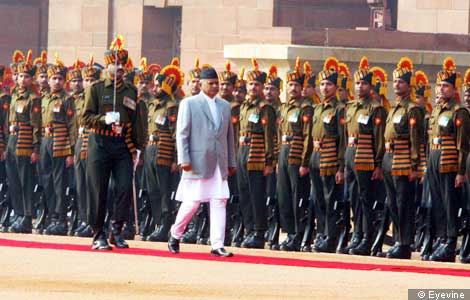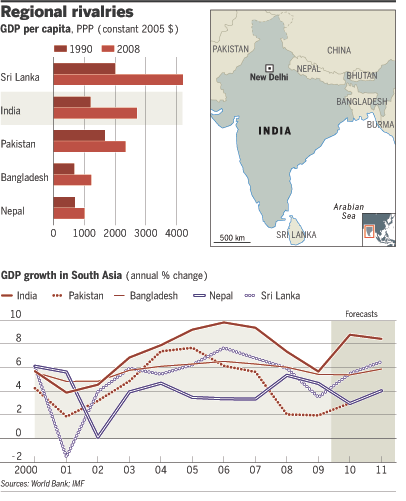
FT full-page analysis by James Lamont that depicts India worrying that its economic clout in South Asia isn't translating effectively into local influence in the face of rising Chinese efforts to do the same.
Nepal is depicted as a potential flashpoint, a la the short but bloody 1962 war between China and India in the Himalayas.
India doesn't even have a rail link with its neighbor, we are told.
By comparison, China – Asia’s other great emerging economic power – has made huge efforts to improve relations with its neighbours during the past decade, settling a number long-running border disputes, making large investments in infrastructure and offering preferential trade terms.
Tensions between China and some of its neighbours have increased, however, especially over what some countries see as Beijing’s increasingly assertive approach to territorial disputes in the South China Sea.
A lack of regional cohesion will put the area at an economic disadvantage to the more dynamic markets of east Asia.
It also poses big security risks for India, most importantly from China, in what is likely to become a tussle for regional dominance in the coming decades. Ashok Mehta, a retired general and respected security analyst, says that if China one day controlled the heights of the Himalayas in Nepal, it would have no need of a nuclear arsenal trained on India. He views the country as a strategic linchpin whose loss would cost New Delhi dearly.
I will admit, this is the one bilat in the world that worries me WRT great-power war potential, and it all involves the very relativistic fears of falling behind.

The weird thing is, it's India that is racing ahead economically in south Asia, far faster than its neighbors, who, in turn, are more welcoming to Chinese economic penetration as a balancing function.
India, it would seem, needs to borrow a page from Turkey's foreign policy of "zero problems with its neighbors."